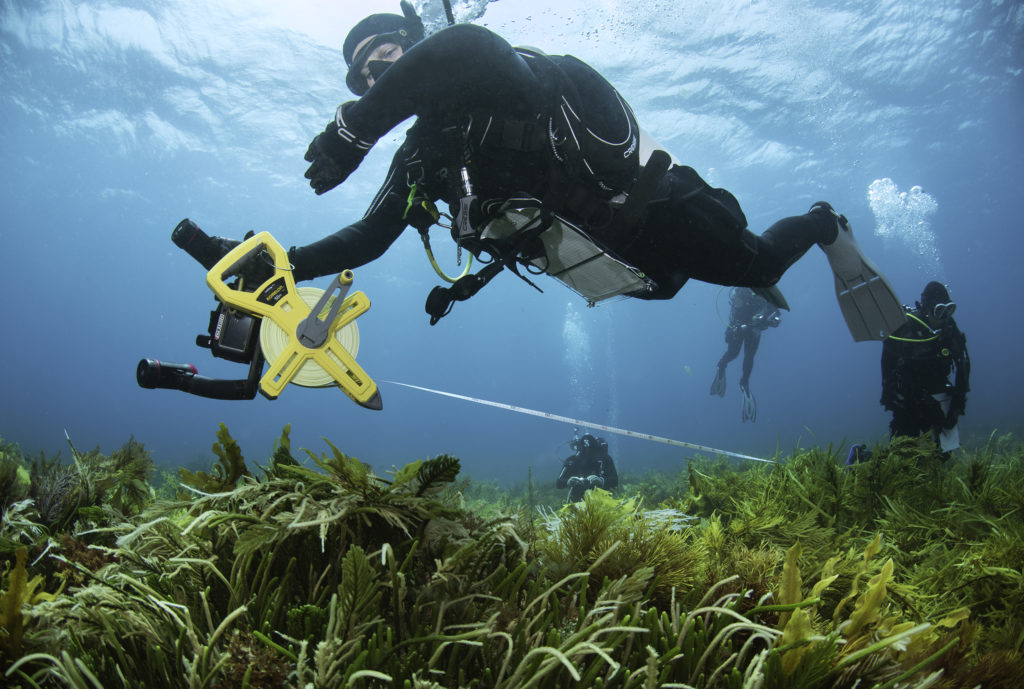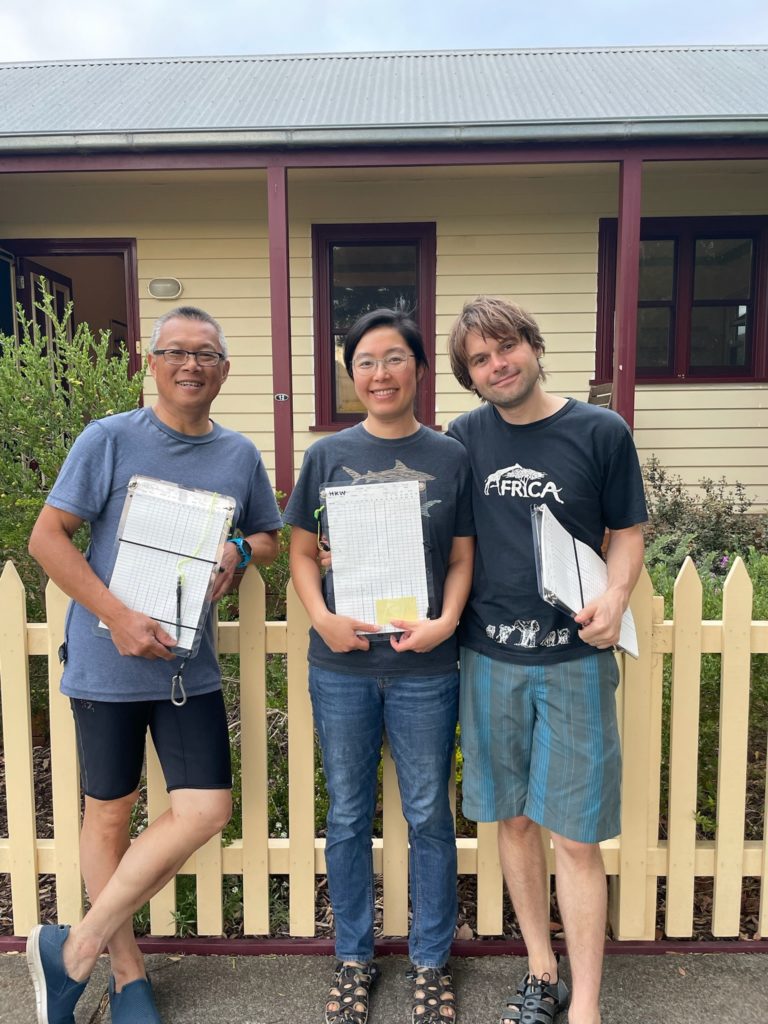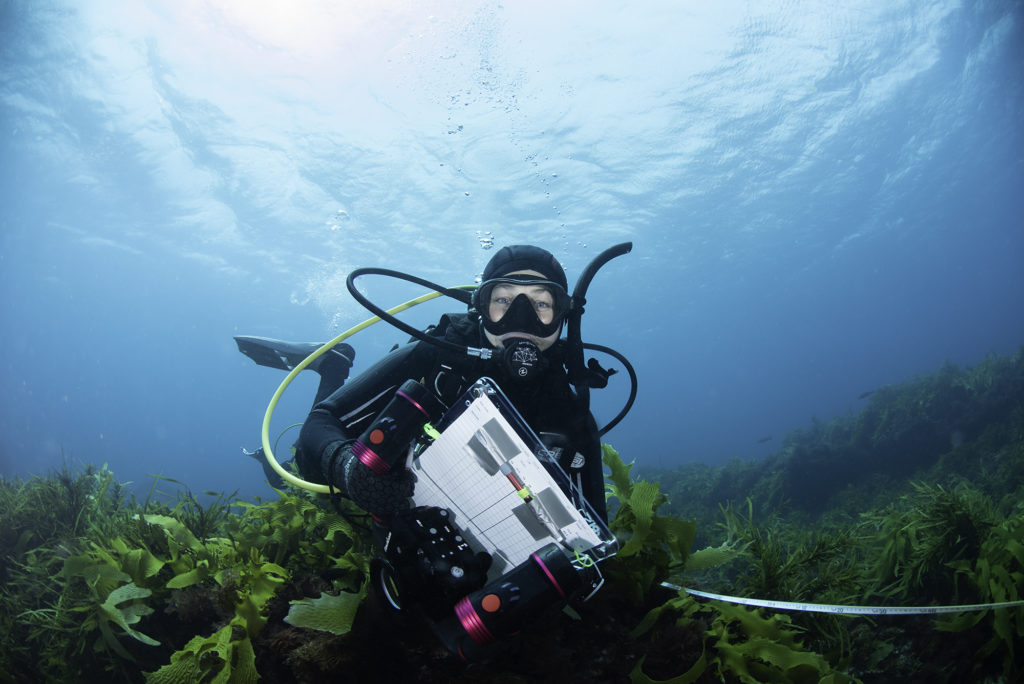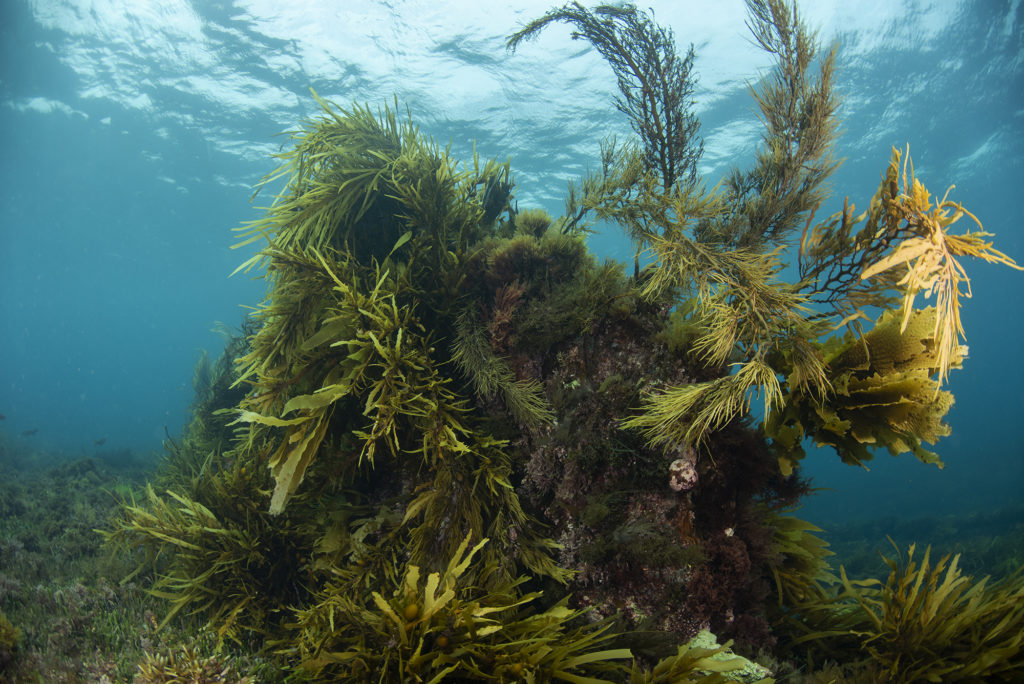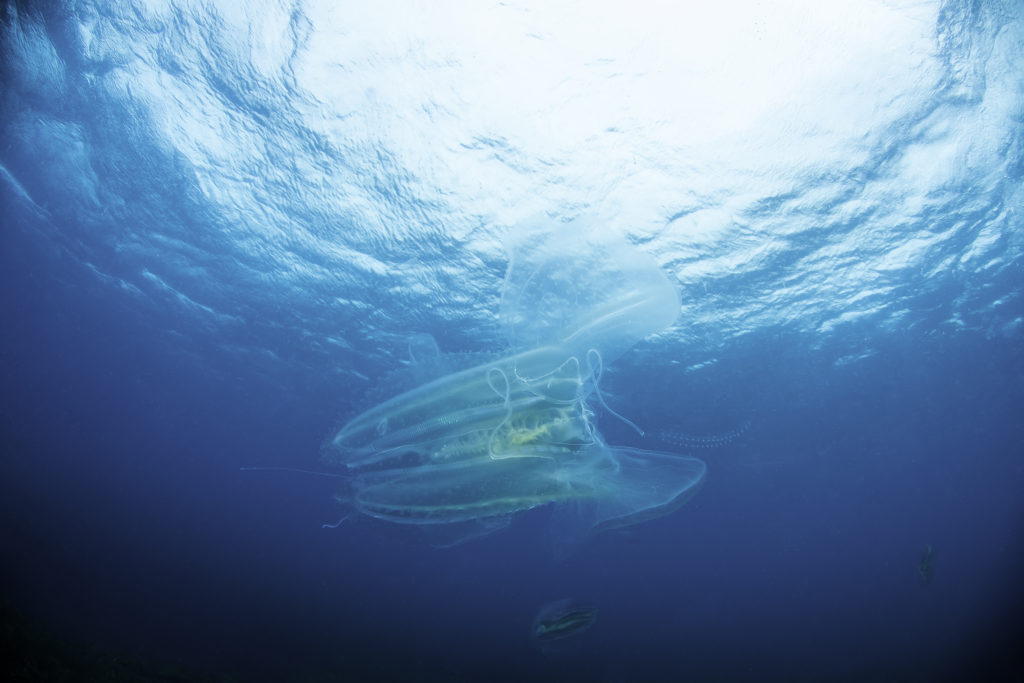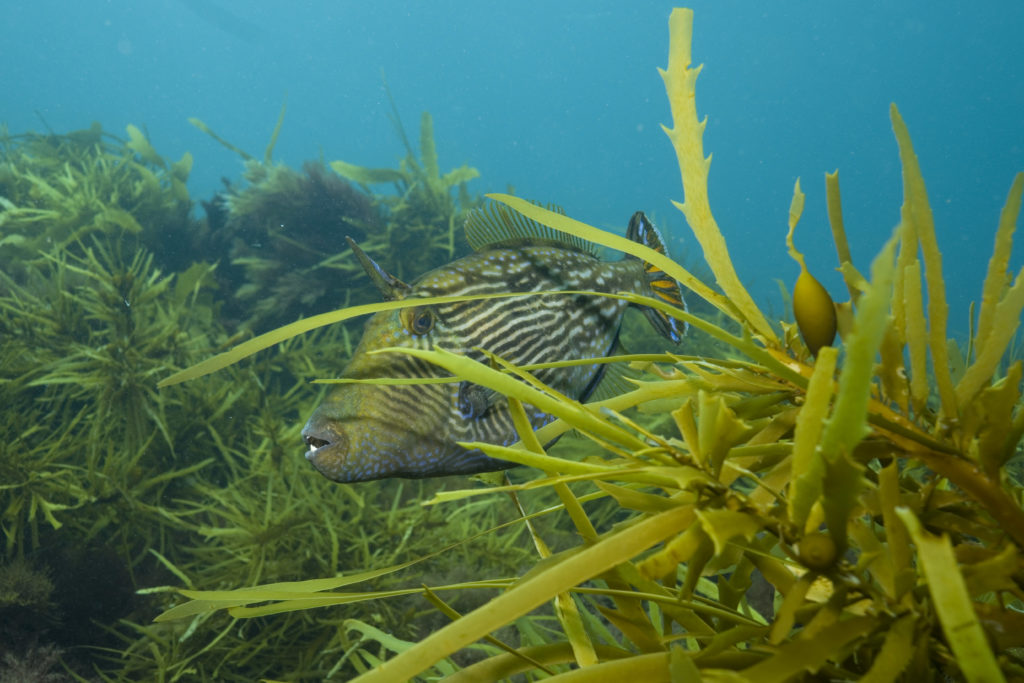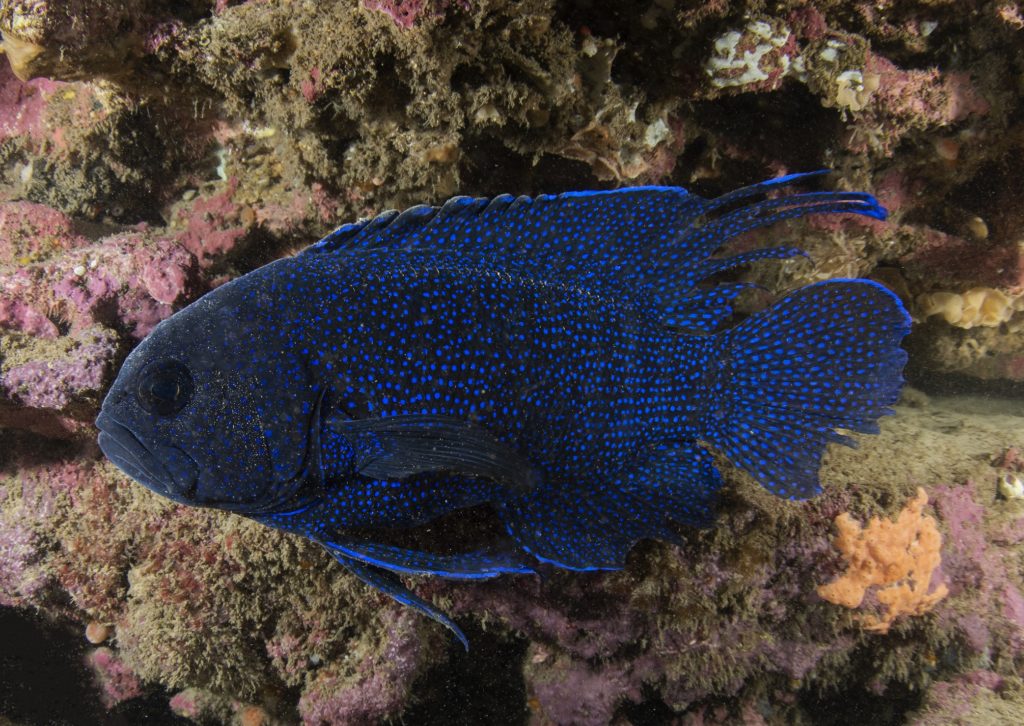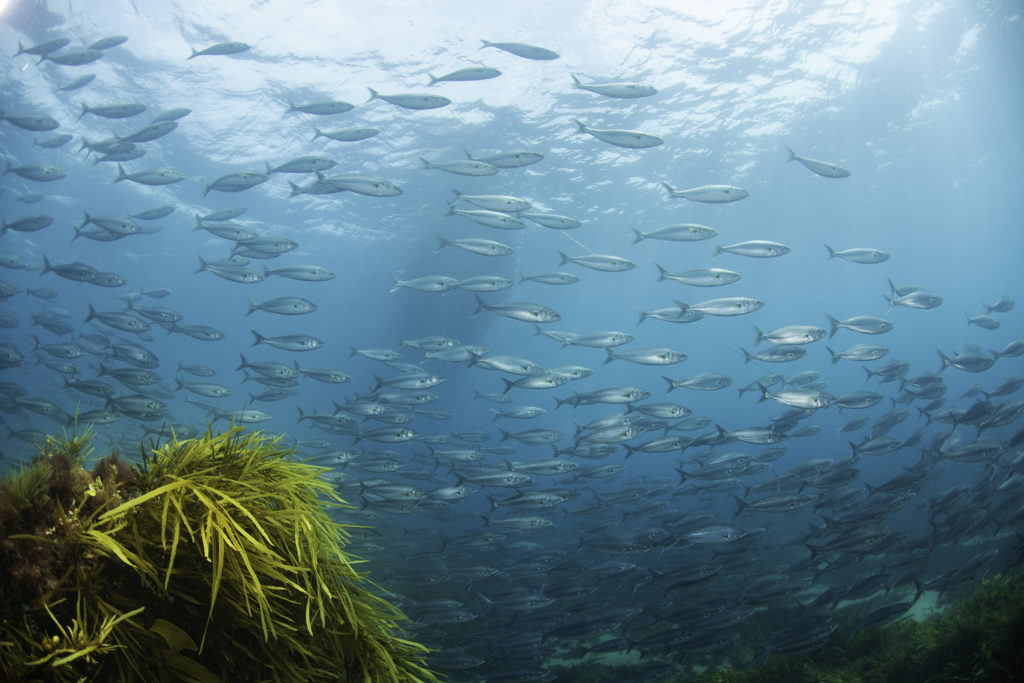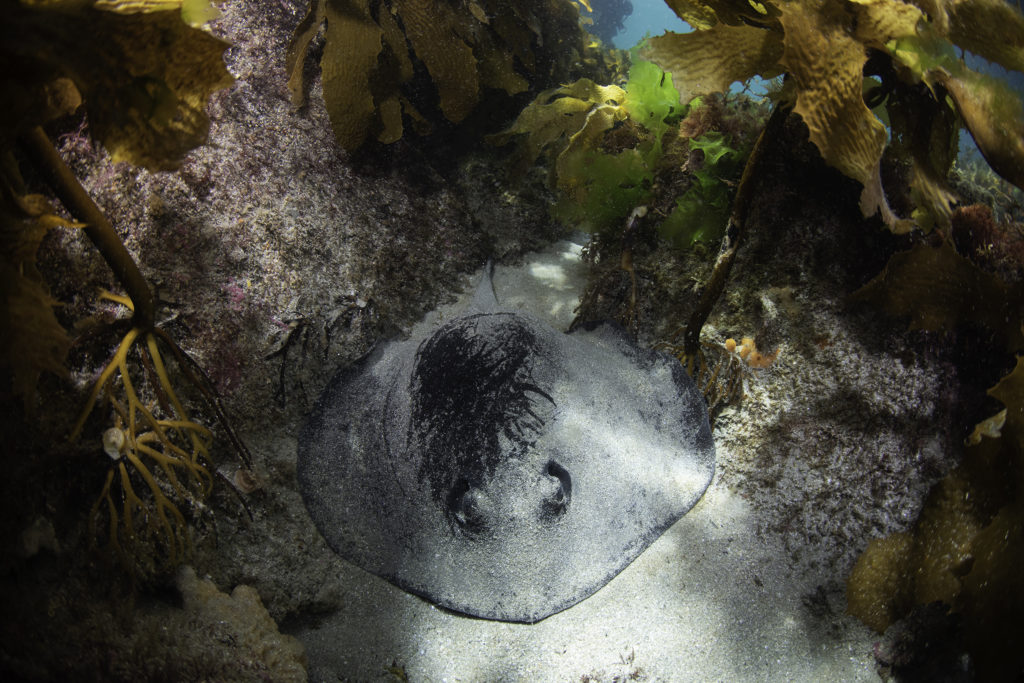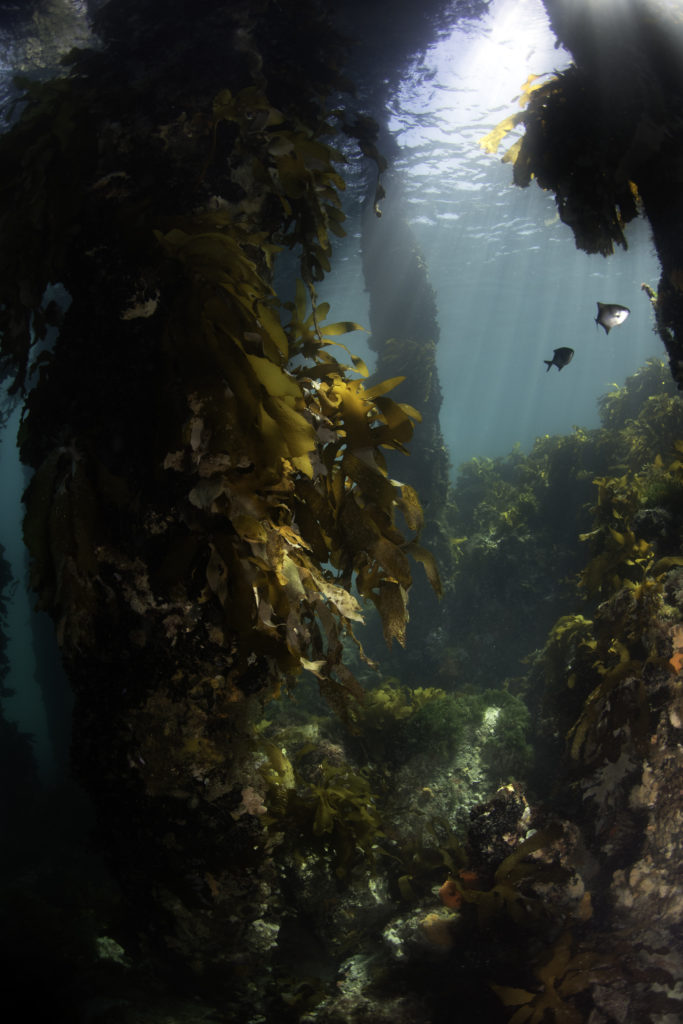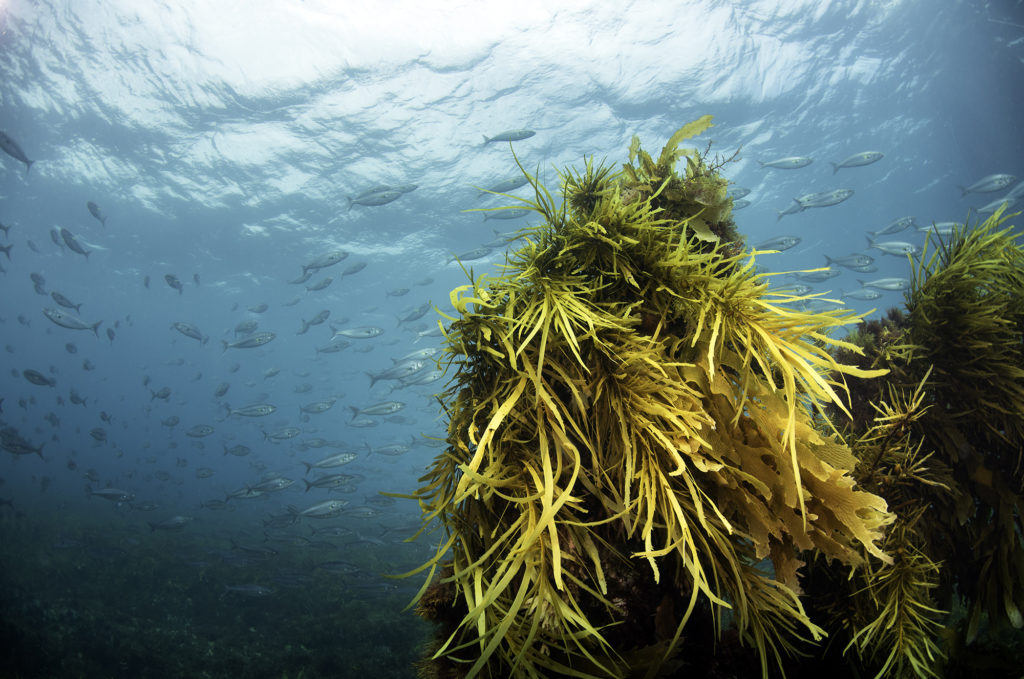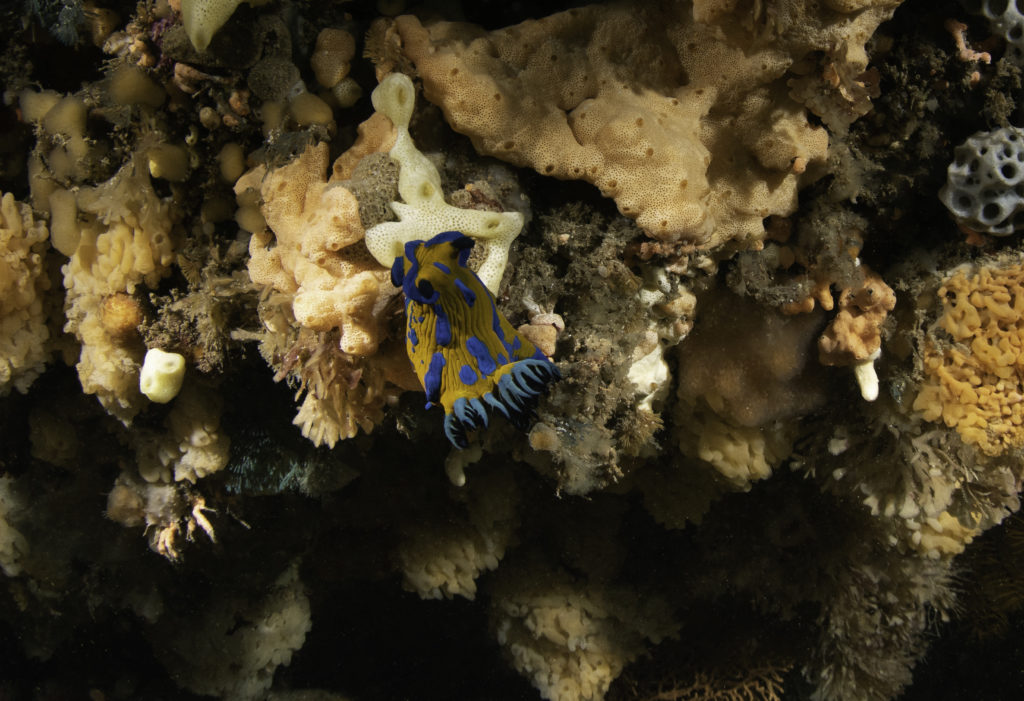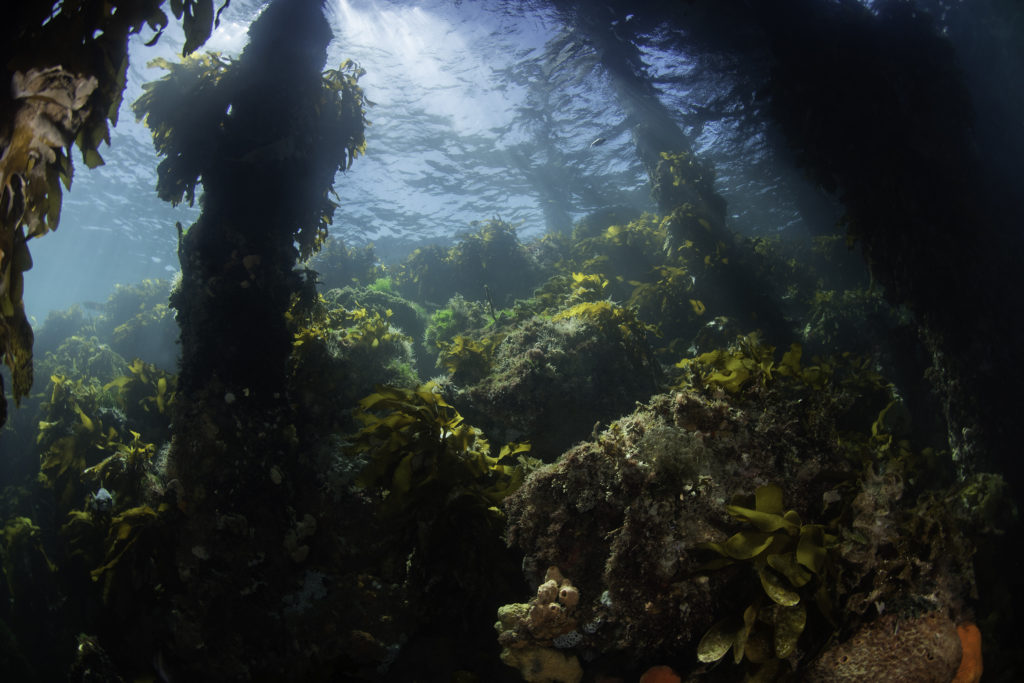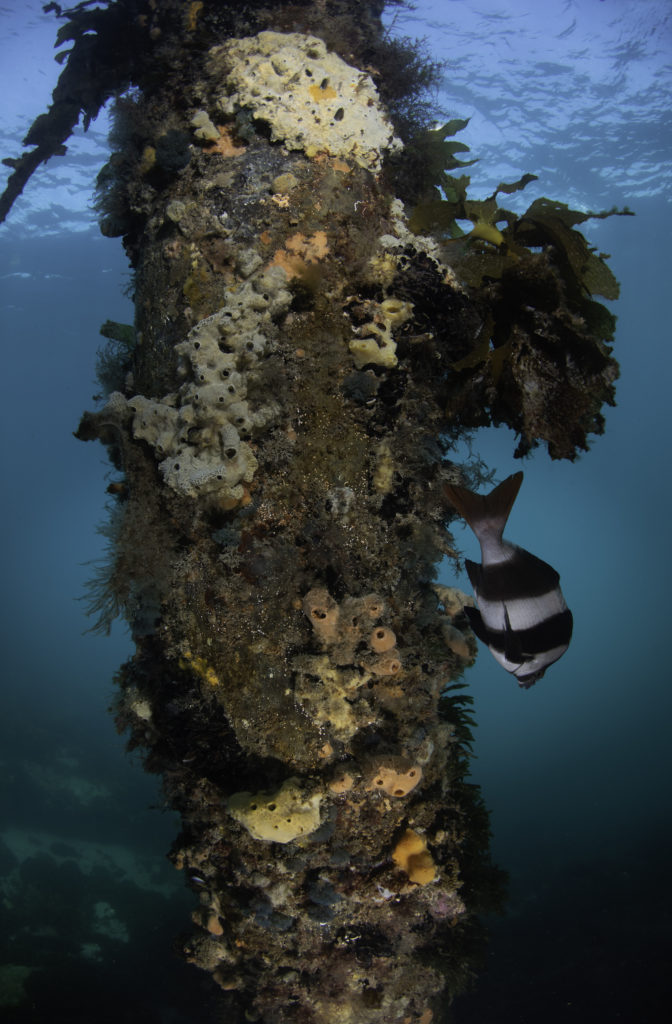After 2 years of cancelled trips and Covid-19 we were all pinching ourselves that we were here, yes, the long-awaited Victorian RLS training trip was finally here!
An eager team of new Victorian recruits, consisting of James Chong, Paul Wembridge, Heyonji Wembridge, Tess Hoinville, Corrine Telford, Elodie Camprasse and Tim Godfrey, came armed with enthusiasm, eagerness and of course, RATs! Victorian RLS veterans Andrew Green and Jacqui Pocklington also joined the team for some boat dives and also helped tick off some of our shore sites around Indented Head and St Leonards. The Trainee team arrived in Queenscliff and were met with strong easterlies... but the swell was kind. Day 1 of our RLS training trip started with a good mix of diversity across 2 sites which contrasted well and gave everyone a feel for what diving is typically like in Port Phillip Bay. 'Kelp Beds' near Lonsdale Wall was our first site and a great example of the vast Ecklonia beds sprinkled with Phyllospora - typical of sites which are more exposed to the current from "The Rip". The Rip, also known as "The Heads", is the narrow waterway entrance connecting the Bass Strait to Port Phillip Bay. The high volume of water moving through this narrow entrance dictates when we can and cannot dive, our more exposed sites...but our trusty captain, Paul, aka "Skip", can pick a slack tide a mile away so we were always in good hands. Our second site was Point Franklin, tucked up on the Nepean side of the Bay. The low profile reef and rubbly bottom initially looked uninviting (some may even say 'boring') but, as often happens when you are doing an RLS survey, once you start searching, especially for Method 2 species, it's amazing what you will find - we had 4 different species of weedfish (Heteroclinus spp.), a silver spot (Chironemus maculosus) and some Bighead Threefin (Trianectes bucephalus), just to name a few.
The next few days saw us dive some of our regular favourites such as Cottage by the Sea and Shortland Bluff- we got buzzed by the resident large smooth ray (Bathytoshia brevicaudata), and after searching in-and-under plenty of sandstone reef overhangs, we were rewarded with numerous Blue devils (Paraplesiops meleagris). Blairgowrie Pier threw a spanner in the works as this site is a cryptic fish and invertebrate mecca and often these are species we don't get at other 'rocky reef' sites! The structure of the pier offers additional protection and surface area for many of the smaller, more cryptic species to thrive and the team were put through their paces to ensure they found every species of goby, weedfish, threefin and dragonet. We poured over a lot of ID photos that night!
The easterlies persisted over the weekend...and then, by a stroke of luck, both the swell and the wind dropped to almost nothing. Skip suggested we venture outside the Heads to survey some of our Point Lonsdale sites, and of course we jumped at the opportunity given these sites are so rarely done due to prevailing swell. The crossing was dead calm and the conditions outside were unheard of, looking over the side of the boat was like looking into a mirror! The team were excited and wasted no time getting in the water - the excitement was justified - with audible squeals of delight, we had almost 30m of crystal clear visibility! The shipwrecks that scatter the coastline of Point Lonsdale clearly visible from the surface. Our transects ran over the timber hull of one, was it the 'Light of the Age' or the 'Columbine'? We dearly missed not having our Victorian Reef Life Surveyor and shipwreck guru, Don Love, on the boat that day.
The team put in a huge effort over the weekend. The learning curve was steep, but by the end of the 4 days, people were reeling off scientific names without hesitation! A huge thanks must go to James Chong for facilitating these surveys through his successful grant application with CoastCare Victoria. His efforts behind the scenes, putting together the team, organising the field equipment, logistics, liaising with divers and baking the most delicious sourdough were outstanding. To the new recruits, thank you for your time, efforts, and a big welcome to the RLS family! Big thanks to Paul and Anneke for being such great skippers. And finally thanks to CoastCare Victoria for funding this project and facilitating diver training in Victoria - bring on our next trip in November!
Cheers,
Toni Cooper
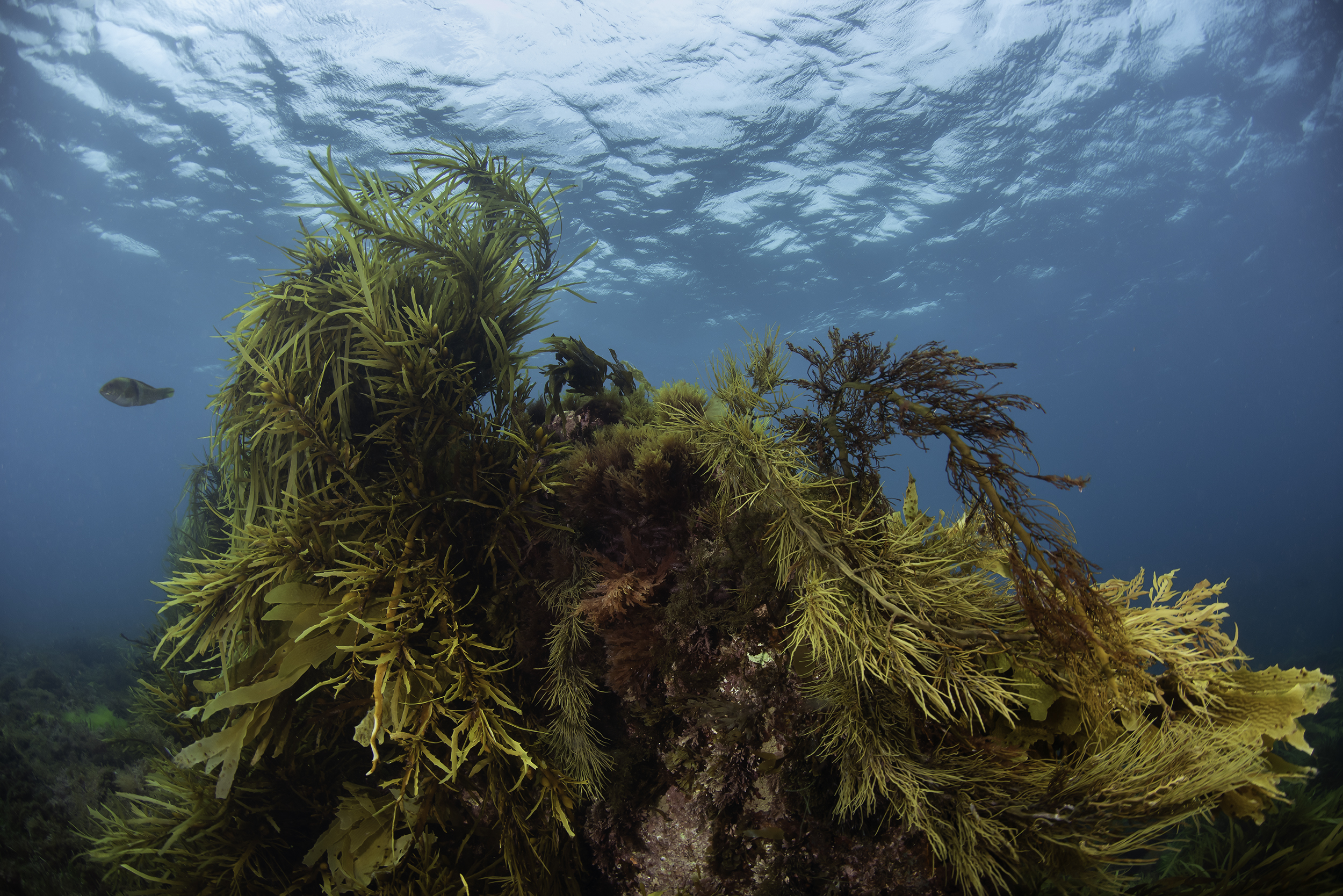
Port Phillip Bay, by Andrew Green
What with Covid, and to an extent weather, arrangements for this official RLS trip were quite precarious! Shout out to Toni transforming half a dozen new recruits into models of precision data collectors, all the while recording valid data herself.
This piece is on my experience helping boost survey numbers, along with Jacqui Pocklington (formerly Parks Victoria, now DELWP). We met at Indented Head on Thursday 10th to survey two shallow sites which hadn’t been done for years. Since neither of us had surveyed for a while, we chose to start with these easy sites. My trusty GPS refused to work at all (Bellarine satellite black hole), but fortunately having studied the sites map and previously scouted the sites, I had bearings and distances ready to go.
The reef at the first site is typical Port Phillip Bay, notable if only for its existence at all; surrounded by sand with seagrass; low profile; absolutely hammered by fishes. After a 150m swim to the start, not much to see but hey! it’s representative, so we need to measure what’s there (or not there, in this case). The second site was more fun, as it comprises two wrecks (the Ozone and the Dominion) sunk yonks ago to provide a breakwater for Indented Head, and now mostly bones, except for the Ozone’s skeleton paddle wheel which refuses to collapse and is a well-loved landmark.
One tape fitted neatly on each wreck, which is just as well as the site has no natural reef at all. In homage to Donny Love who initially selected this location, I laid the second tape through the remaining guts of the Ozone via a slightly cramped swim-through beneath the paddle wheel. More diversity and abundance here, due I suppose to the boat bones providing better cover. Certainly, the stingarees love it! But what to do with the M2 “Debris” category (since everything was debris)? I created a new debris code “De100%wreck”! Something to discuss at an Advisory Committee meeting one day…
Next day we met at St Leonards to do the jetty, my equal favourite Victorian dive site, and a tough gig because of all the stuff that’s there. But the water was angry and dirty, so we had to go to Plan B which was Steele’s Rocks, further to the north. Another long swim to start. Barely any fish on our Method 1 search, as expected. But true to form, the enforced thoroughness of the M2 search revealed treasures: numerous weedfish when you swept away their algal cover, and a super cryptic Sculptured Goby, Callogobius mucosus. I might dive there again one day!
Toni offered me a boat spot on Sunday and Monday and I took the opportunity to dive more of the “real” Port Phillip Bay! Sunday saw us outside the Heads west of Point Lonsdale, in really good viz! Like CLEAR! 25m plus… we were all so surprised. Species diversity wasn’t prolific, but the sites were filled with beautiful algae. Notable mentions for the sites were some big crays and schooling salmon, but a Bluelined Leatherjacket (Meuschenia galii) made the dive for me!
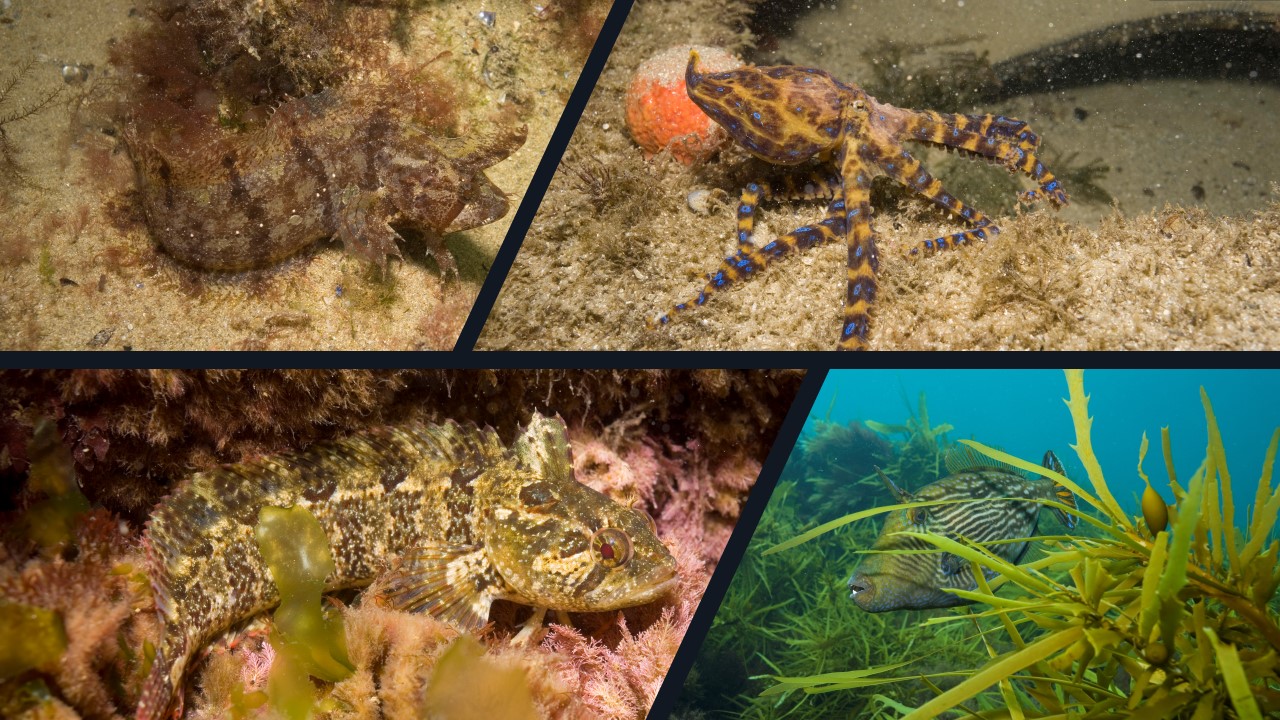
Since the Melbourne-based recruits will be surveying a lot of jetty sites, Toni had a surprise for us on the Monday: Blairgowrie Jetty! This is not normally a boat dive for locals who live on the other side but would be a minimum 2 hour drive from Geelong (for me) through heavy traffic. In other words, not happening, even though it’s said by all who dive it to be iconic; a spider crab aggregation site (although not at this time of year); weedy sea dragons, Phyllopteryx taeniolatus everywhere; anglerfish on every pylon; and so on.
Expectations were high, but none of the big tick species were seen unfortunately. A reasonable score of inverts resulted, and some interesting cryptic fish species, including weedies smothered in the weed. Possibly an excuse to go back and try again for that elusive tasseled anglerfish?
Last site (of the official trip): South Channel Fort. I don’t know the history but I’m guessing this is an artificial pile of boulders in the middle of nowhere, which might have supported a gun battery to discourage Russian invaders last century, or was it the one before… (Hmm… might come in handy again!).
This site rocketed to my equal Victorian favourite (along with St Leonards). Clear water, good diversity, loads of Barber Perch (Caesioperca rasor), literally thousands of a new (to me) species of Nesogobius; and to cap it all, a fabulous jetty with beautiful light and structure, and even more species (sadly, not on transect). Somewhere I would gladly come back to, to play with wide angle photography.
Jacqui still had some leave, so with a good weather window on the following Thursday, we agreed to do St Leonards, armed with my newly-acquired jetty-surveying expertise. I’ve lost count of how many times I’ve dived this site, but it’s by far the most diverse I know of in Victoria, for fish as well as inverts, so I knew it would take forever to do the jetty part. We had with us James Chong, the new Victorian RLS coordinator. I had him replicating my blocks so we could discuss and compare findings, as a post-training exercise.
The rock wall transect was straightforward, apart from heaps of fishing debris and the need to avoid fishers; noteworthy for a common weedfish which posed for an inordinate amount of time at the tape end, allowing us all to observe it. The jetty transect was altogether different, with difficulty compounded by the pylons being quite close. The jetty method requires the tape to zig zag between pylons, with each block searching every second pylon. This meant 10 or so pylons in each block, and the need to fully search the bottom 2m of each pylon, as well as the bottom, which is a sort of fake reef of all kinds of debris, supporting its own community.
A small sample of critters: a blue ring octopus, Hapalochlaena maculosa somehow disturbed and flashing its rings before disappearing into a tyre; at least two species of weedfish (Heteroclinus spp.); all three Tosia seastars; a Moonlighter (Tilodon sexfasciatus) cleaning a Blue Weed-whiting (Haletta semifasciata); two gobies, a triplefin and a blenny; clouds of Long-fin Pike schooling with Yellowtail Scad, and so on. Over 90 minutes all-up; arduous but totally enjoyable.
That’s it for now, but plans are afoot to continue with another Indented Head site, then venture closer to the Heads, with current-prone sites such as the Springs.
In summary, the weekend was met with good weather, 12 sites, 112 species and a terrific crew of trainee divers. This training weekend was made possible by a successful CoastCare Victoria Grant. We give thanks to James Chong, DELWP, Parks Victoria and Southend Charters for their support of this project.
